An annotated bibliography is a list of sources curated with comments or opinions about each source in the list. It is meant to let the readers know what the sources used in the paper are all about, why they were used, and their quality. It is necessary to use examples in an annotated bibliography because it enables the reader to learn how to provide an adequate summary and evaluation of sources.
An annotated bibliography example PDF is a document that assists students, researchers, and professionals in understanding how to create annotated bibliographies and their formatting. These examples demonstrate how annotation skills can be applied in practice to improve understanding and learning. They make annotated bibliographies neat and informative for better learning.
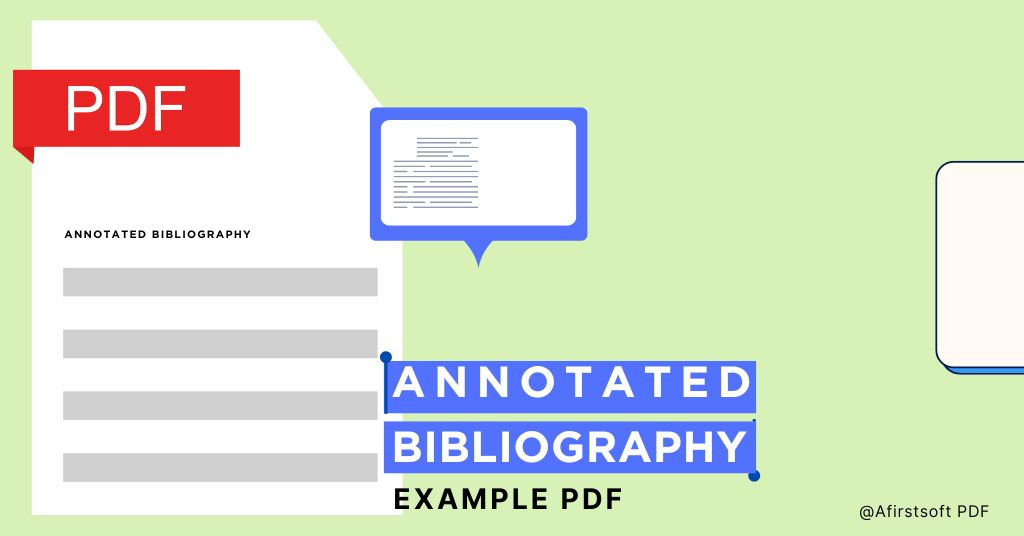
Part 1. Example of Annotated Bibliography PDF
In this section, you will learn how to create and use an annotated bibliography PDF with a clear example for your better understanding.
Sample Annotated Bibliography
Now, let’s take a look at what parts should be included in the sample annotated bibliography PDF document:
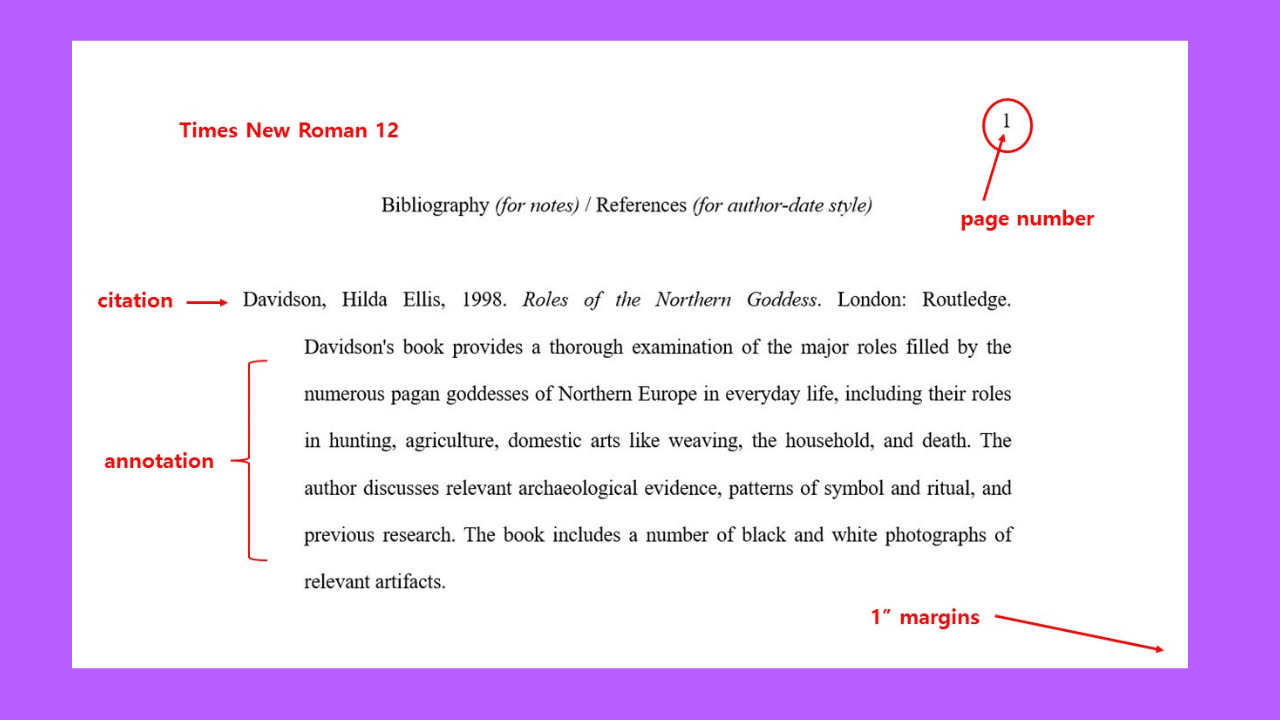
Citation:
- Smith, J. (2025).Impacts of climate change on the biotic component of the ecosystem. Vol 12(2) Journal of Environmental Studies, Page 45-60.
- Brown, A. (2019). Sustainable Agriculture Practices: The last is the Global Dimension—publisher XYZ.
Summary:
Smith shows how climate change affects people and species. Brown’s book is a narration of the practice, success, and difficulties in the implementation of sustainable agriculture in different countries. It also involves the author’s profile.
Evaluation:
Smith’s work relates to prior literature on the impacts of climate change on species richness. While Brown’s book contains a lot of useful information, but he uses examples from the past, so his recommendations are not very useful in addressing contemporary problems.
Break Down of Each Section Annotated Bibliography PDF
A sample annotated bibliography PDF document includes three main parts: citation, abstract, and analysis. Here's a detailed guide on each part and how they appear in the example PDF.
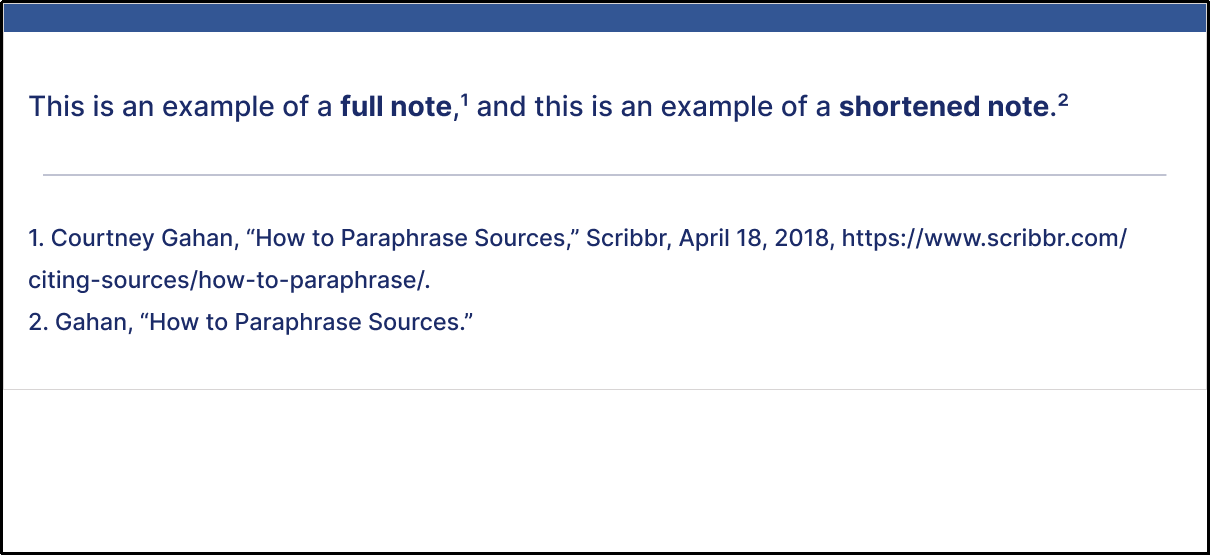
Citation:
This section provides details about the source, like the author of the material, the material, the date of publication, and the category of the source. Whether it is a book, an article, or a webpage, it is often written following a particular citation format such as APA, MLA, or Chicago. In the annotated bibliography PDF example, the citation is put at the start of each entry of the source. These citations can be formatted as full notes or on shortened notes.
Annotated Summary:
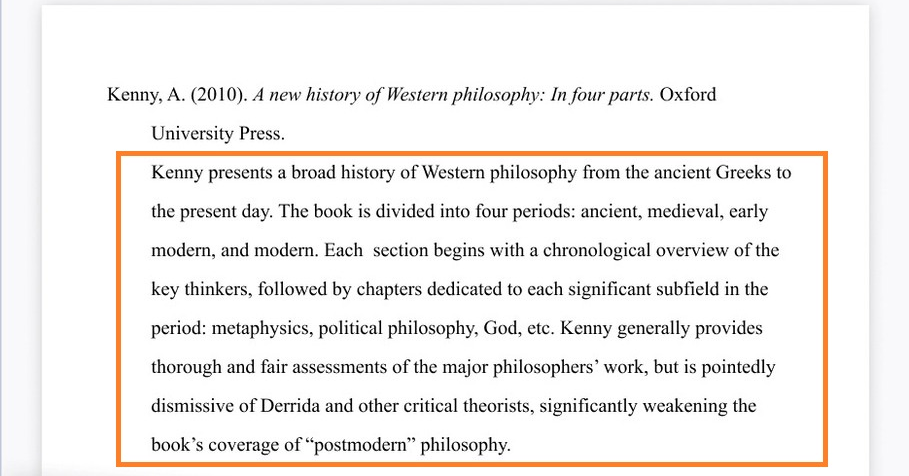
The summary provides the main facts and ideas of the source. It is brief, non-ornate, and does not contain any flowery language, and the facts are stated clearly. In the example, PDF, the summary is a few sentences or one to two paragraphs at most.
Evaluation:
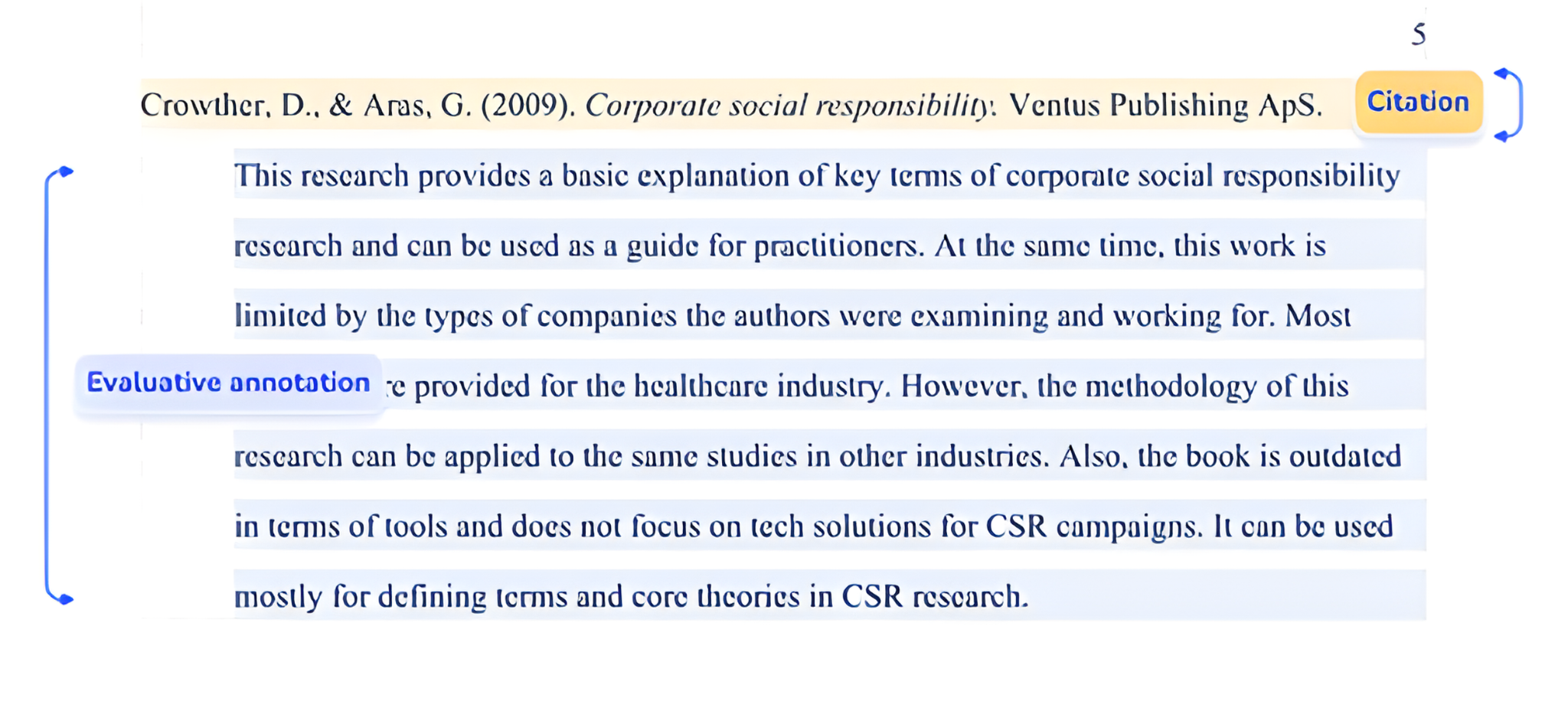
Reliability, credibility, relevance, and importance are the criteria used in the evaluation of the source. It includes remarks on the procedure used, the author’s bias, advantages, drawbacks, and relevance to the reader. In the example PDF, the evaluation is written after the summary.
In the example PDF, each source is cited at the start of the source. This citation provides the basic information about the source, such as the author and the year of publication. Next, the summary gives brief information about the source without the writer’s bias. Last but not least, the evaluation identifies the relevance and credibility of the source. This format helps the readers to go through the source quickly and know what part is useful and whether to use the source or not.
Part 2. Benefits of Using Annotated Bibliography Examples
Certain examples of annotated bibliographies are useful in providing some tips on how to write such papers. They describe the style and structure of the contents, citing the structure of the illustration. These examples show the writers how to do it, how to cite, how to summarize, and how to evaluate sources properly.
Therefore, the use of examples assists the writers to have a better understanding of the parts of annotation. They learn the process of annotation from the initial stage to the final stage of the process. First of all, it is necessary to understand what an annotated bibliography format is and what kind of material it includes. Examples are the main source of such knowledge. They assist the writers to produce accurate, detailed, and easily understandable annotated bibliographies within a short time.
How Examples Can Help in Understanding the Structure and Content of an Annotated Bibliography
In each of the annotated entries, there is a demonstration of how to make citations, summaries, and evaluations. These examples show how critical analysis can be incorporated with context information. Therefore, writers are in a position to differentiate between integrating sources and assessing them.
Moreover, examples are more tangible, such as the author’s experience, the approach to conducting the study, and the significance of the problem. They also show how one can determine the credibility of the source. Thus, writers can link annotations to research objectives, questions, and issues. In addition, they help the essayists in learning the manners of academic communication.
Serving as a Reference for Creation
Since annotated bibliography samples are important in helping to develop good bibliographies, it is important to have some examples. They give specific guidelines, for example, on how to format entries, how to arrange information, and how to write informative and assessive annotations. Furthermore, these examples show how annotation can be done in different ways and inspire the writers while helping them to follow the guidelines. Moreover, the examples of citation styles enable writers to be agents of change in scholarly writing. Besides, it improves their professionalism and helps to maintain academic standards. Therefore, annotated bibliography examples are useful and functional resources that help create more extensive bibliographies and engage with the sources more effectively.
- 100% secure
- 100% secure
- 100% secure
Part 3. Tips for Creating an Annotated Bibliography
The following tips help you create an annotated bibliography more uniquely.
- An annotated bibliography involves searching for information, synthesizing the information, and then assessing it. The paragraphs must be short, in the range of 150 to 250 words.
- First, select the sources that are to be used for the topic and those from the category of peer-reviewed journals, books, and web resources.
- Ensure that all the identified sources are relevant and will be useful to the study.
- Key points, the author’s main points, the conclusion, and the topic of each source should be discussed in 3-5 sentences.
- Consider the credibility of the source, the technique used to gather data, and the appropriateness of the data gathered.
- Consider the author’s background, their perspective, and how the source aids in understanding the topic.
- As for the citation style, it is suggested that the given advice be adhered to in order to improve the structure and coherence of the annotated bibliography.
Instructions on the Selection of Sources, Synthesizing, and Critiquing
- Choose the sources that will give different perspectives and detailed information concerning the area of interest.
- For each of the selected sources, provide the objectives, findings, and the general contribution of each source.
- Make sure that the summaries that you are developing are relevant and suitable for the sources that you are applying in your study.
- Assess the reliability, the research method used, and the relevance of each source to the objectives of the research.
- The last aspect that should be taken into consideration is the author of the content and possible biases of this person.
- Describe how each source helps you to learn the content area.
- Thus, it is necessary to be fair in the assessment of the sources that have been selected. Therefore, it is necessary to describe the advantages and disadvantages of the sources.
Citation Styles and Formatting: Their Relevance
As for the citation style, it is suggested that you use the citation style suitable for the type of your paper to ensure the credibility of the annotated bibliography. It is also suggested that the author and the year of publication be included in each of the citations. Check the punctuation, and be certain that the use of italics and indentation is correct. Citation management tools should be used for the purpose of eradicating mistakes. Make sure that the font size is chosen, the distance between the lines, and the distance between the text and the margins are also optimal to make the document look neat. Ensure that citations and annotations are used correctly to enhance the appearance of the paper and that the guidelines are followed.
- 100% secure
- 100% secure
- 100% secure
Part 4. How to Annotate PDFs with Afirstsoft PDF: A Step-by-Step Process
Here we provide a step-by-step,p guide to ease the process of annotating pdfs online for free for our valued users.
Step 1: Launch PDF Afirstsoft PDF On Your Mac or Windows
To start with, one needs to download and install the Afirstsoft PDF on the device. To import the PDF document that you want to annotate, go to the “File” option and click on the “Open” button. This step prepares your document for annotation within the Afirstsoft PDF that you will use in this project. When you open your PDF in this editor, you get a host of tools that are intended to help in the reviewing and marking up of the document.
Step 2: Access Annotating Tools
After opening the PDF, look for the “Annotate” button on the program toolbar. If it is not shown, turn it on from the “View” tab. The available annotation tools are Highlight, Underline, Strikethrough, Text Box, Sticky Notes, and Shapes. These tools are crucial for the proper markup of your document and enable you to add different sorts of notes and changes to your PDF.
Step 3: Highlights and Text Mark-Ups.
To highlight text, go to the annotation drop-down menu and choose the ‘Highlight’ option. Place the cursor on the text you want to select, press the mouse's left button, and then drag it over the text. To underline the text, select the “Underline” button, or to cross the text, select the “Strikethrough” button. You can change the color and the type of these annotations with the help of the bar located at the top of the page. Such tools assist in drawing attention to specific segments and,’ highlighting corrections that have been made.
Step 4: Include Comments/Notes
Select the “Sticky Note” option in the annotation bar to add comments on the video. Place the cursor on the part of the PDF where you want to insert the note. Below the image, there will be a text area that you can use to enter your comments or notes. To manipulate the sticky note, you can simply click on it and then drag it to your desired position. This feature is very useful for providing extra information or comments regarding the main text without having to write it in the text.
Step 5: Download Your Annotated PDF and Share It
Once you have finished with your annotations, click on the “File” button and then click on “Save” to save the changes. To share the annotated PDF, simply open the PDF, click on ‘File’, and then click on ‘Share’, and then you can share the PDF via email or using a cloud service. This way, your annotated document is open to others for review and collaboration while preserving the annotations’ integrity and promoting teamwork.
- 100% secure
- 100% secure
- 100% secure
Part 5. FAQs
Q1. Where can I find my annotations?
Make sure that annotations are saved correctly with the help of the correct PDF viewer. Annotations have to be placed within the document so that they can be visible on different platforms. Modify the PDF viewer settings to the required level of visibility.
Q2. How can I improve the speed of annotating large PDF files?
To increase the speed, it is recommended that other open applications be closed and the cache in the browser be cleared. Ensure that the device you are using supports the software to eliminate cases of inefficiency. If the PDF is too large, attempt to reduce the size of the PDF to make the process faster.
Q3. Why do the highlight or the margin notes that I made vanish when I save the PDF?
Ensure that auto-save is enabled in the PDF editor settings of the application that you are using. Before closing the file, it is recommended that the work be saved in order not to lose the annotations made.
Q4. What should I do if the PDF annotator often freezes or crashes?
Make sure that you are using the current version of your PDF annotation tool to minimize the bugs. Either increase the memory of the device or split the large PDFs into smaller ones that can easily be managed. Regularly reboot your device to clear the system cache and improve performance.
Part 6. Conclusion
To conclude, this blog post has covered comprehensive guidelines on how to create a functional annotated bibliography. Some areas of concern include sources and how they are identified, as well as the process of summarizing, evaluating, and citing, besides citing techniques. Several students find annotated bibliography examples useful for understanding the structure and content of annotations, and it improves the quality of writing.
In the case of the annotated bibliography, one has to work with the example PDF provided and apply the practical tips from the post. Thus, following these guidelines and using examples, the writers will be able to enhance the quality of their research work and, therefore, contribute to the progress of the scholarly community and academic advancements.
- 100% secure
- 100% secure
- 100% secure

John Smith
Editor-in-Chief
With 10 years of experience in the office industry, John Smith is a tech enthusiast and seasoned copywriter. He likes sharing insightful product reviews, comparisons, and etc.
View all Articles >
